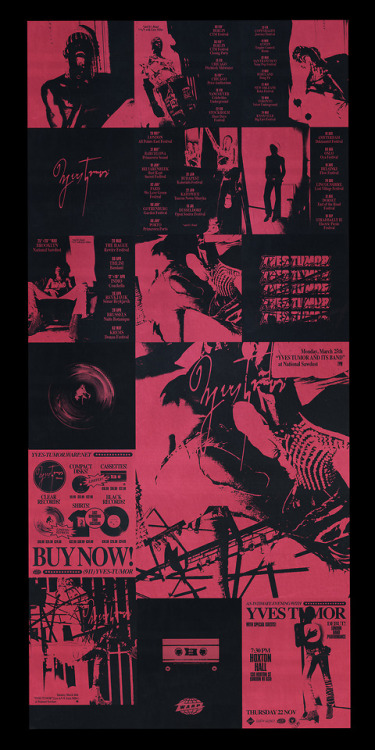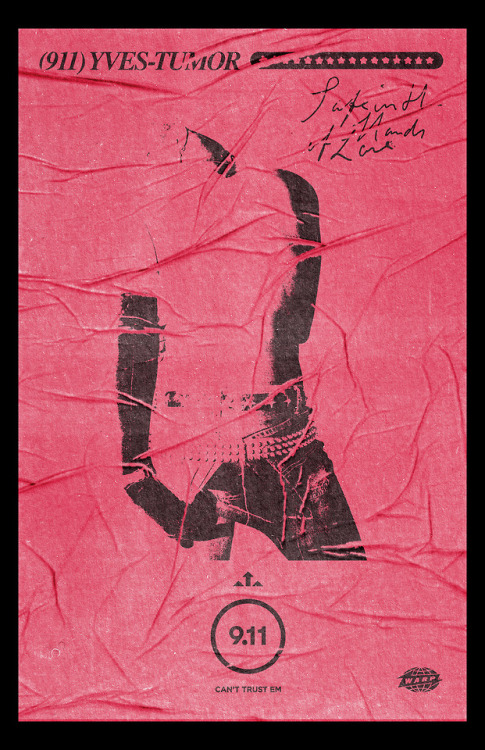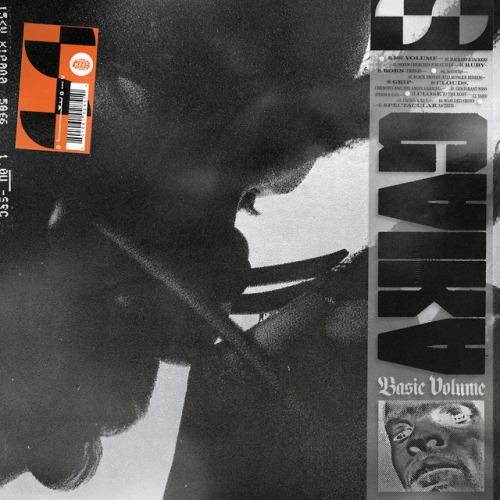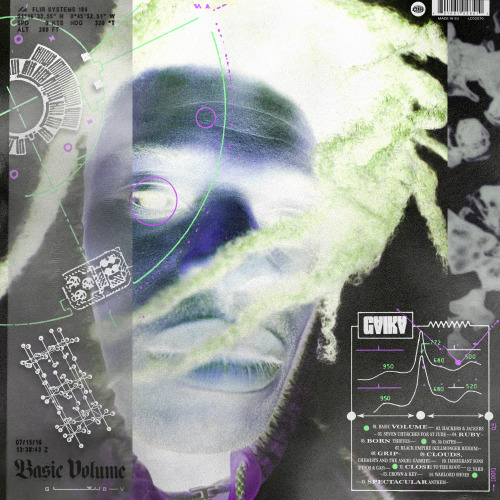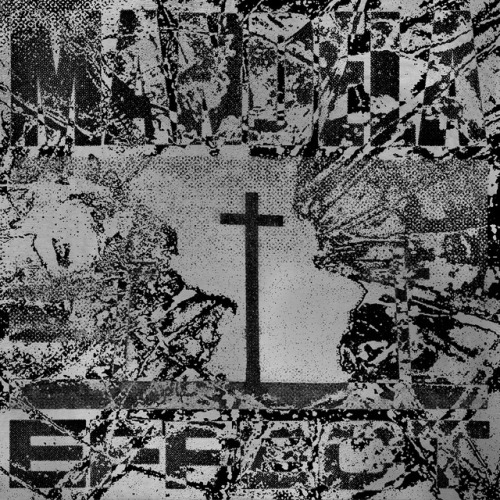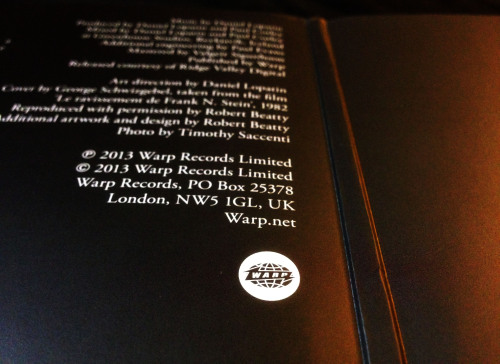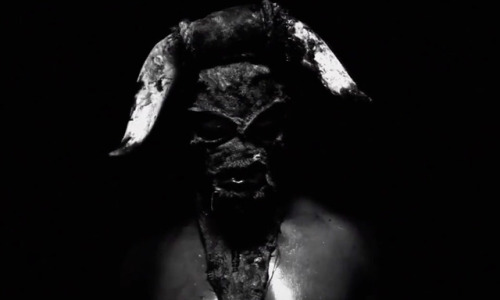#warp records
Aphex Twin - Avril 14th (Drukqs, 2001)
3.28.22 Terribly sad to hear about the death of Warp recording artist Mira Calix. RIP.
Gaika — Basic Volume (WARP285)
Art Direction & Design: 12:01 — Office of Hassan Rahim
Photography by Joshua Gordon
Additional design by J.S. Aurelius
Post link
Flying Lotus - Tiny Tortures
Oneohtrix Point Never - R Plus Seven (Warp)
- Oneohtrix Point Never is Daniel Lopatin
- ‘R Plus Seven’ is produced and mixed by Daniel Lopatin and Paul Corley
- Recorded at Greenhouse Studios (Iceland)
- Cover by George Schwigebel and taken from the film 'Le ravissement de Frank N. Stein’, 1982
- Photo by Timothy Saccenti
- Design by Robert Beatty
Post link
THE PED HEAD ERA
In the winter of 2018, the city of London was rocked by months of large-scale civil disobedience when demonstrations over public sector pay turned violent. The demonstrations were an expression of frustration at the government’s austerity policies and the entrenched and systemic unfairness that had become authority’s identity.
Although initially peaceful, the protests turned violent when police attempted to kettle a group of five teenagers on motorised scooters. The young riders took off, breaking through police lines and, in the ensuing high-speed chase, one young black man lost his life after being forced off the road by an unmarked police cruiser.
Further angry demonstrations took place, leading to months of confrontations happening almost daily between militant black youths on bikes and police. Infighting on the traditional left caused the growing youth movement to flounder politically. Ethnic minority orientated social justice organisations such as CAGE and Black Lives Matter UK were arrested and their leaders put on terror watch lists.
Denigrated as an uncontrollable terror menace by the media, the young men at the centre of the dispute changed tack and began to wilfully antagonise the authorities, using détournement as their primary psychological weapon. Instead of attacking the police or committing property crime, they began to satirise and vandalise high-profile commercial property throughout the city under the cover of darkness. They would escape on fast, plateless street bikes. They concealed their identities using full visor helmets, masks and customised protective gear. Their cause was taken up by a number of popular artists of the day, and a culture of music recounting their exploits began to gain popularity. Underground funding, often from the proceeds of organised crime, was made available to the riders, and their exploits became more and more daring.
The Met police came under pressure to catch and neutralise the riders. They ignored expert advice to avoid chase situations and – in an echo of what had occurred with Baltimore’s 12 o’clock boys – there were a number of near-fatal accidents involving police vehicles and innocent civilians. With the stakes rising rapidly, the local mythology surrounding these riders grew exponentially, and early 2019 saw an explosion of street-rider culture nationwide.
THE STRIKE
The police began a heavy-handed campaign of ‘stop, search and detain’ on any person who appeared to be under 30 years old riding a motorcycle or moped, or even emulating the custom protective clothing that the riders had made fashionable. Streetwear designers began to incorporate protective functionality into their garments and major sportswear brands looking to capitalise on the outlaw image began covertly sponsoring riders, turning them into social media celebrities. In anticipation of Brexit, Italian scooter dealers began offloading discontinued moped and scrambler stock at hugely reduced prices. Customisers pulled the bikes apart and re-engineered them into what became known as ‘guerrilla bikes’. More than 500,000 were shipped in May of 2019.
On the street, the bikes were further modified to work with mobile phone anti surveillance apps. Police scanners, onboard video streamers, number plates that could be made invisible at the touch of button and heavily optimised, microcomputer-controlled engine performance were all features added to the vehicles at knockdown price.
The teenage bikers began to use their technical advantage to enrich themselves criminally on a larger scale. In one popular manoeuvre, known as a ‘spray-down payback’, unemployed and embittered Polish and Romanian lorry drivers would be paid to escort up to ten riders, loaded up in their containers, to large office complexes, casinos, luxury hotels or shopping malls. Using expertly forged papers and fake uniforms, the lorry driver would gain access to the buildings’ loading bays and tightly dock the vehicle to the trade entrance. At an opportune moment, the riders would open the doors, speed out from the back of the lorry and swarm into the building, terrorising everyone in their path with smoke flares, dazzle paint and even CS gas. In the ensuing chaos, armed robbery was carried out by previously placed agents who would leave the building as pillion passengers riding out with the original swarm. Millions of pounds of property damage could be caused in under ten minutes, and the riders could get away safely before police arrived.
The loot collected was easily converted into cold, hard cash on London’s rapidly growing black market. The profits were generally invested into fleets of high-powered show vehicles – big-engined and aggressively styled track motorcycles designed for drag racing that became sought-after status symbols and marks of allegiance on the streets. The faster and fancier the drag bike, the more prowess and rep its owner and their gang had as an outlaw organisation. Many of the city’s disillusioned and marginalised young men were drawn deeply to the culture. The risks of getting caught were low but the rewards were high, and old gang allegiances began to dissolve into more organised and militant structures as the authorities ramped up their offensive. The raw speed and technical supremacy these drag-style machines offered the owner a massive advantage in any given police chase. It became de rigueur to taunt the police for thrills.
After a three-year-old child playing in her front yard was hit and fatally injured by a reckless young biker, the public demanded answers. In order to quell the escalating tension, prime minister Theresa May issued a statement criticising the method of police intervention in these cases as well as making vague overtures towards criminalising guerrilla bike ownership. This proved to be a watershed in deteriorating relations between Downing Street and the police, who felt that the guerrilla bike ban would be too little too late, and that the government had put them in an impossible position through the deadly combination of public pressure, lack of funding and crumbling infrastructure.
That summer, the police (followed by the fire brigade and the nurses’ unions) went on a series of strikes, causing major disruption to cities across the country. As a response, the prime minister announced plans to privatise large sections of the police force, which in turn began running a reduced service in an effort to force the government’s hand. The police continued to maintain public order, but vowed not to enforce laws relating to traffic violation, motorised property law or public nuisance – the very areas of legislation covering much of the bikers’ sphere of activity. The government countered with draconian legislation – demonstration and large-scale public congregation was outlawed by emergency decree on September 24, 2019, followed by a law requiring all two-wheeled vehicle customisers to be registered and subject to random checks for outlawed technology. This was enforced by the use of CCTV, specially armoured drones and regular army personnel.
THE SQUAT
By the winter of 2019, two years after the notorious Grenfell fire and the mass relocation that occurred in the months following, a number of the Grenfell missing had still not been identified. The many thousands of tower-block tenants who had been forcibly removed from their homes across the country under the auspices of fire safety now faced permanent relocation into refugee camps springing up in the Midlands or long-term homelessness within London. Desperate and angry, they began to squat in many of the city’s empty luxury developments without meaningful fear of eviction, because of the vastly reduced police force. A number of the newly redundant police joined the squat and acted as go-betweens with the authorities and the community. Many of the nation’s young people, disillusioned with the slow pace of change in the country, soon followed suit, and many more people up and down the UK simply stopped paying their rent as the protest gathered pace. Squatting became a widespread practice among those under 30. The Conservative government and sympathetic press declared it a national emergency. The prime minister invoked martial law and began to commission heavily armed private security companies to evict the squatters.
This instability was widespread in the capital and, along with the now badly stalling Brexit negotiations, terror attacks and political infighting, had the effect of suppressing the value of the pound against the euro. By December 2019, the pound was at dollar parity. The central London property market began to hollow rapidly, having been artificially buoyed by overseas wealth. Landlords were dismayed by the very public squatter-versus-security violence, and began trying to sell the properties out from underneath the squatters for whatever they could get.
The squatters were portrayed by the press as largely being young, poor, black and criminally minded. While there was little available data on who was simply not paying their rent or mortgage in those areas outside of the claimed developments, the groups who actively took over the high-value empty property complexes such as One Hyde Park, or Paddington Basin were largely composed of the now older and highly organised, highly motivated bike gangs who, once they had moved in, claimed (with a degree of truth) to protect the area from the hired government muscle that were trying to evict the homeless families.
The right-wing press blamed the squatting on illegal immigrants or those people of colour who, while legal, weren’t prepared to leave post-Brexit. Xenophobic and racist attacks on minorities living in and around the squatter enclaves became common. Minorities began to quietly move to these places for safety and they continued to grow, overlapping traditionally multicultural areas. That they often neighboured very rich localities created a situation of rapid flight and re-occupation by incoming squatters. The squatters took control of local cash businesses. The army were unwilling to intervene for fear of escalation amid government instability, viewing it as an issue for civilian police.
In the West End there were highly publicised instances of wealthy families being forced out of their homes at gunpoint by masked raiders. Stories of widespread carjackings, beatings and general mayhem at the hands of bike gangs dominated 24 hour television news coverage. Although largely untrue, the perception of general insecurity amongst the rich became major downward driver on city centre property prices. By January 2021, the problem was so bad that the House of Saud implemented an emergency buyout scheme for all Saudi, Qatari and UAE nationals who owned properties in the UK, and consolidated its own extensive portfolio into one bloc asset. The governments of the ‘BRICS’ countries, seeing an opportunity to exercise their power on beleaguered British soil, soon did the same. Austerity-riven and cash-strapped local authorities and their private proxies, burdened by the increased cost of private policing, began selling entire housing developments (from which they were no longer collecting significant revenue) to the BRICS Property Services, further increasing the influence of foreign interests.
COLD WAR
In March of 2021 the UK government, against the wishes of the European Union, joined the United States in committing to a large-scale military intervention in Syria. China, Russia and Iran formed a military and intelligence alliance and began overt support of Syrian government forces, entering into an intense cold war phase with the US and the UK. Iranian agents, with the support of their alliance partners, began to covertly undermine the Saudi property operation in London. Making contact through existing Triad networks, Chinese, Russian and Iranian intelligence officers began to recruit and train the leaders of the motorcycle gangs who now ruled the squatted Saudi-owned developments. Primed to lead a revolutionary force within London, these inductees were trained in urban warfare, intelligence gathering, weaponry and explosives.
THE CRASH OF 2022
With an election looming, senior government figures advised that the stricter financial regulations that had been brought into play after the 2008 crash should be relaxed in an effort to stimulate growth. Following Donald Trump’s hugely unpopular state visit in late April 2020, both visa restrictions for American nationals and corporation tax rates for US-based enterprises had been drastically reduced. The EU responded by refusing to continue Brexit negotiations (already granted a three-year extension in 2019) and five years after the invocation of Article 50, the UK crashed out of the EU in 2022 with no arrangement on access to the common market, no trade deal and little agreement on anything else. The UK economy, weakened by five years of simmering social unrest and Brexit uncertainty, was unable to deal with the shock. Almost immediately, there was a catastrophic crash on the markets, resulting in public panic.
The Queen died, and the scheduled 2022 election was postponed until the following year. In 2023, Chuka Umunna’s hastily created Neo-Labour party won a slim majority that many viewed as a poisoned chalice. The UK’s historic over-reliance on financial services and its productivity gap proved fatal as the country went through two years of hyperinflation. Blue-chip UK businesses went under by the boatload, and the country experienced food emergencies for the first time since WWII. By 2024, unemployment stood at 70 per cent. The entire country effectively suspended productive activity as billions of pounds were wiped from the UK economy overnight by the ruthless financial speculation. Rather than help the stricken economy, the super-rich stripped the country of all the assets they could and rapidly relocated.
By October 2025, with winter looming, the World Bank stepped in with the offer of gargantuan loans, underwritten by American oil money, in order to uncapsize UK plc. Jeremy Corbyn, now 76, came out of retirement at the behest of the people, and his far-left-wing Momentum government swept to power on the premise it would broker a good deal with the World Bank and renationalise essential services, including housing. After much negotiation, loans were made on many conditions that importantly included:
1.) A fast action plan to rebuild UK business was implemented.
2.) That the seven-year-old squatter issue was fully resolved.
One of Corbyn’s first moves was to announce a re-nationalisation and redistribution plan, whereby wealthy UK landlords and business owners – particularly non-doms and tax evaders – were compelled to sell their assets to key government-approved holding bodies (that were often in effect wholly owned and created by American multinationals) and, once stabilised, the government would absorb these bodies and begin to collect and redistribute wealth. Compulsory asset seizure was to be the result – no compliance. In 2026, Jeremy Corbyn mysteriously disappeared while cycling to his home, and his plan was set aside.
The immediate effect was the transfer of many central London business and property holdings into the hands of multinationals. By late 2030, over 80 per cent of Greater London property of any kind was owned by various American banks, Facebook, Google and Amazon, which began to run automated operations collecting fees for rent and services, as well as contactless purchases direct from your paycheque. In the short-term, this had the intended stabilising effect.
Between 2027 and 2030 the country slowly went back to work, but power had shifted out of the hands of the government and firmly into the hands of foreign interest. The remaining 20 per cent of property wealth was carved up between the old British upper classes, the Saudi-owned squats and areas administered by the BRICS property service. The BRICS held areas were barely tolerated by the government, who sealed them off from the rest of the city. They were offered supplies and even munition by the BRICs governments, who now viewed them as valuable forward positions in the face of growing US aggression. These were young, densely multicultural areas that became hotbeds of anti-American/anti- UK government activity and strongly resisted infiltration from the outside.
The Saudi government appealed to the US companies to wrest control of huge valuable Saudi-owned properties from the squatters, leading to garrison-type hand to hand warfare on the streets of London. The bike gangs, having grown into rapidly deployable insurgent units, directly attached to the FSB and the Chinese military, easily outdid the US government-hired muscle. They forcibly took control of the Saudi-owned squats, where they were greeted as heroes by the previously embattled squatters. The UK authorities were forced to concede.
Having successfully secured their position in London the BRICS Property Service was privatised and its assets were eventually sold to the mega firm HNA.
WARRING STATES
The turmoil felt in the UK can be seen as a small part of the much larger pattern of worldwide upheaval that occurred within the pre-apocalypse ‘Trump dynastic’ period. Between 2022 and 2040, the worldwide cold war gave rise to shifting loyalties in international relations, with the situation often threatening to escalate into a catastrophic nuclear worldwide conflict. In 2032, a popular revolution centred around the city of Chicago (later renamed Chiraq) and a short civil war splintered the United States into three major factions:
The Confederate – A federation of walled-in fascist republics loyal to the Trump dynasty was formed when California seceded from the US in 2032. It assumed violent hostilities with neighbours Canada and Mexica almost immediately, but remained neutral with Russia and engaged in a cold war with the increasingly powerful China.
Heavily armed, aggressive and politically conservative in nature, the Confederate covered much of the former USA’s landmass and remained the dominant power in the region. Its inward-facing non-expansionist policy was discarded. In 2034, Barron Trump’s Confederate forces seized large chunks of Scotland, claiming ancestral ownership. Interest on loans made by the World Bank in 2020 became extremely overdue, and 2,000 Confederate soldiers were placed in Scotland to ensure payment. In 2035 it was announced that the UK would become the 47th state of the Confederate, sparking immediate hostility with the Chinese-backed EU.
Mexica – California, Nevada, Arizona and then Texas, with support from combined Mexican, Venezuelan and Brazilian militaries, seceded from the United States to form Mexica. With hefty Russian backing, Mexica maintained serious hostilities with the Confederate for the following decade.
United America – Immediately after the Cali secession and resulting refugee crisis, a number of sanctuary cities announced their operational separation from the newly formed Confederate. New York, Boston, Hartford, Washington, Chiraq, Philadelphia, Detroit, Miami and Atlanta were joined by a swiftly built and heavily fortified hyperloop system. The populations of these cities were rapidly swollen by the purged non-white citizens of the Confederate cities, who flooded in. Smaller local municipalities were absorbed to create hugely populated metropolitan areas. United America was largely controlled by politically liberal tech and banking billionaires led by Mark Zuckerberg and protected by well-paid black and Latino conscripts. Its policy of universal basic income and strategic friendship with Mexica and the BRICS countries, as well as its strong alliance with the resource-rich African and Indian continents, bought it a degree of domestic and international peace.
2047
By 2047, London had become the front line of an uneasy peace between the Sino-European alliance and the Confederate/UK trading bloc. China was now the premier world power.
Like post-WW2 Berlin many decades before it, London was now split into parts controlled by the various forces in conflict with each other. The Sino-European alliance held approximately one third of the city, with the aristocrats now only holding a symbolic five percent of mainly ancestral property. The remaining 60 percent was controlled by forces loyal to the puppet UK administration and thus the Confederate. What had once been squatted luxury developments and looted office skyscrapers were now fortified and technologically advanced garrisons governed by a council of omnipotent warlords who answered directly only to Beijing. These mammoth high-rise citadels were modelled on Hong Kong, had their own digital currency, healthcare, energy, passports and administrative centres. They became centres of entertainment, philosophy and technological innovation, but were riddled with violence and corruption due to the concentrated power of the warlords.
The bike gangs who were considered as founders and protectors of the garrisons were in fact controlled by the warlords and had become highly trained and highly visible representations of this Chinese hard power in western lands. Although the citadels were often lawless in the extreme, they were much more multicultural and liberal in character than the rest of the UK, which had become an isolated pariah state ruled by one of Trump’s sons and his corporate cronies. Travel in and out of the citadels for non-white people was dangerous and largely prohibited. Access to the rest of the world was via an airlift at City Airport and travel from King’s Cross station through the Channel Tunnel.
The now mythical boss of the largest citadel and its quasi-paramilitary bike gang was the de facto head of the Sino-European powers in the UK. In 2048, he waged a campaign of terror on the rest of the city, with the aim of gaining decisive territory and influence. This led once again to a state of civil war that threatened to engulf the entire country and turn the cold war very hot.
The decision was made by the Confederate to destroy the citadels with chemical weapons, in order to kill the people but inherit an advanced infrastructure. The Chinese responded by destroying much of the rest of London, New York and Los Angeles via surprise aerial attack from weaponised satellites. This escalated into a full-scale World War 3 and, by 2050, Europe was almost totally reduced to ashes, with an estimated 150 million casualties.
THE SPECTACULAR EMPIRE
After the armistice of 2057, the old alliances fell away, leaving a poorly recorded and misunderstood period of post-apocalyptic chaos in Europe. It is known that the remnants of the various battle-hardened militias who swore allegiance to the old motorcycle gangs joined forces under a unified code of conduct, heavily influenced by the unique garrison culture, that some have called ‘The Spectacular Empire’. It’s said that this fearsome army used the technology salvaged from the garrisons, and the years of support and training they had received from foreign intelligence, to create a nomadic motorised and militarised apocalypse cult entirely closed from the outside world.
There is anecdotal evidence to suggest they were instrumental in the foundation of New London as the powerful city state it is today. Found artefacts suggest they specialised in developing single-person hypersonic vehicles and claimed to dedicate themselves to the protection of the collective future rather than the maintenance of individual power, in order to avoid another devastating war. It is said they had the ability to travel through time. There are other items that suggest a near-obsessive fascination with magical and mythical entities, which flies in the face of their clear technological prowess. For reasons that remain unclear, the motor cults in London disappeared from view in the 2060s, with some saying they left for Africa around 2062.
Post link

